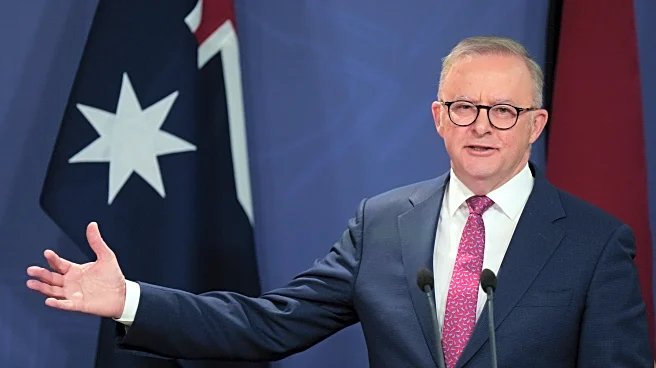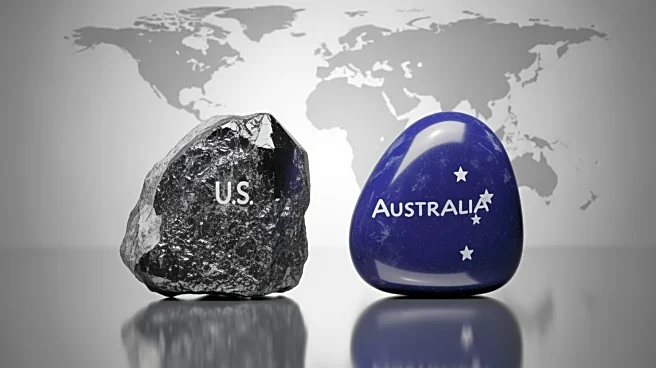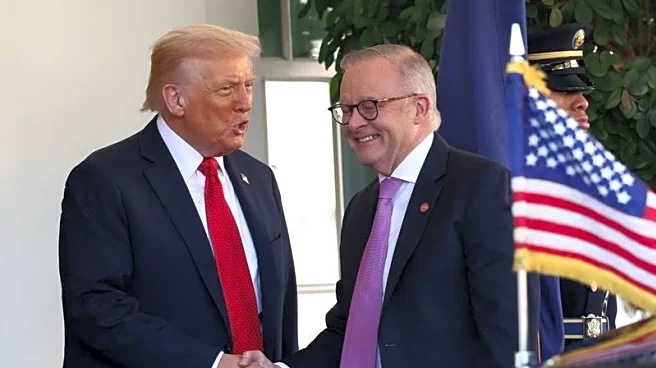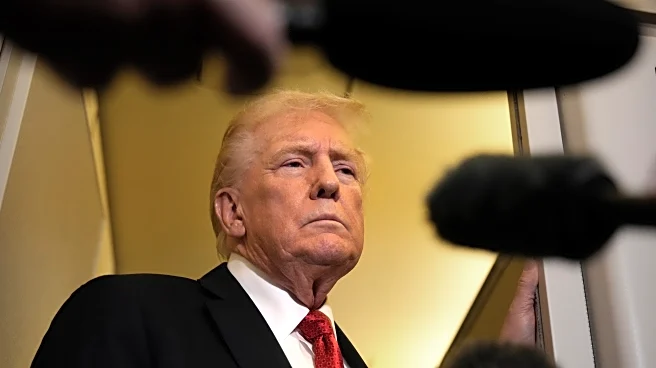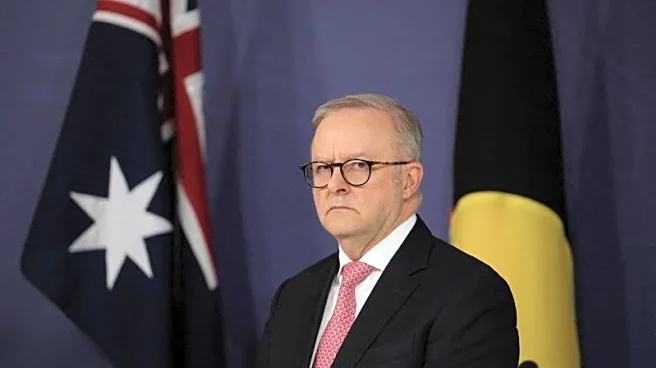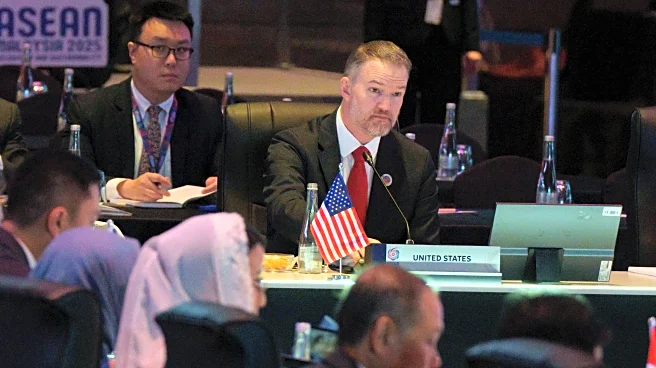What's Happening?
The Trump administration is actively working to diversify the United States' supply of rare earth elements, which are critical for various industries, by partnering with Australia. This move comes as China,
which controls over 90% of the global output of refined rare earths, has tightened its export controls, affecting global supply chains. The U.S. and Australia have signed an $8.5 billion agreement to develop rare earth projects, aiming to reduce dependence on Chinese imports. The deal includes investments in critical minerals projects and the construction of a gallium refinery in Western Australia.
Why It's Important?
Rare earth elements are essential for manufacturing high-tech products such as smartphones, electric vehicles, and defense systems. China's dominance in this sector has been a strategic leverage point in trade conflicts, prompting the U.S. to seek alternative sources. The partnership with Australia is a significant step towards establishing a more secure and independent supply chain for these critical materials. This could potentially mitigate the economic impact of China's export restrictions, which have previously led to shortages and disruptions in various industries.
What's Next?
The U.S. and Australia plan to invest over $3 billion in critical minerals projects within the next six months. The Pentagon will also support the construction of a gallium refinery, and the Export-Import Bank of the United States is set to provide financing for these initiatives. However, experts remain skeptical about the short-term feasibility of significantly reducing dependence on Chinese rare earths, citing challenges such as high energy costs and environmental concerns.
Beyond the Headlines
The strategic partnership between the U.S. and Australia could place Australia in a complex position with China, its largest trading partner. While strengthening ties with the U.S., Australia must navigate its relationship with China carefully, especially as it bolsters defense ties with Washington amid China's growing influence in the Asia-Pacific region.


